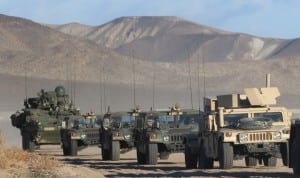
TAUNTON, Mass. – Recent criticism from lawmakers aside, the Army’s battlefield network not only is fielded but has established a baseline communication backbone capable of constant technological upgrades needed for future fights where battle happens as much in virtual world as on the ground, sea or air.The Warfighter Information Network-Tactical, or WIN-T, program came under fire at a recent Army budget hearing by Senate Armed Services Committee (SASC) Chairman John McCain (R-Ariz.) for taking more than 10 years to field,…

 By
By 











